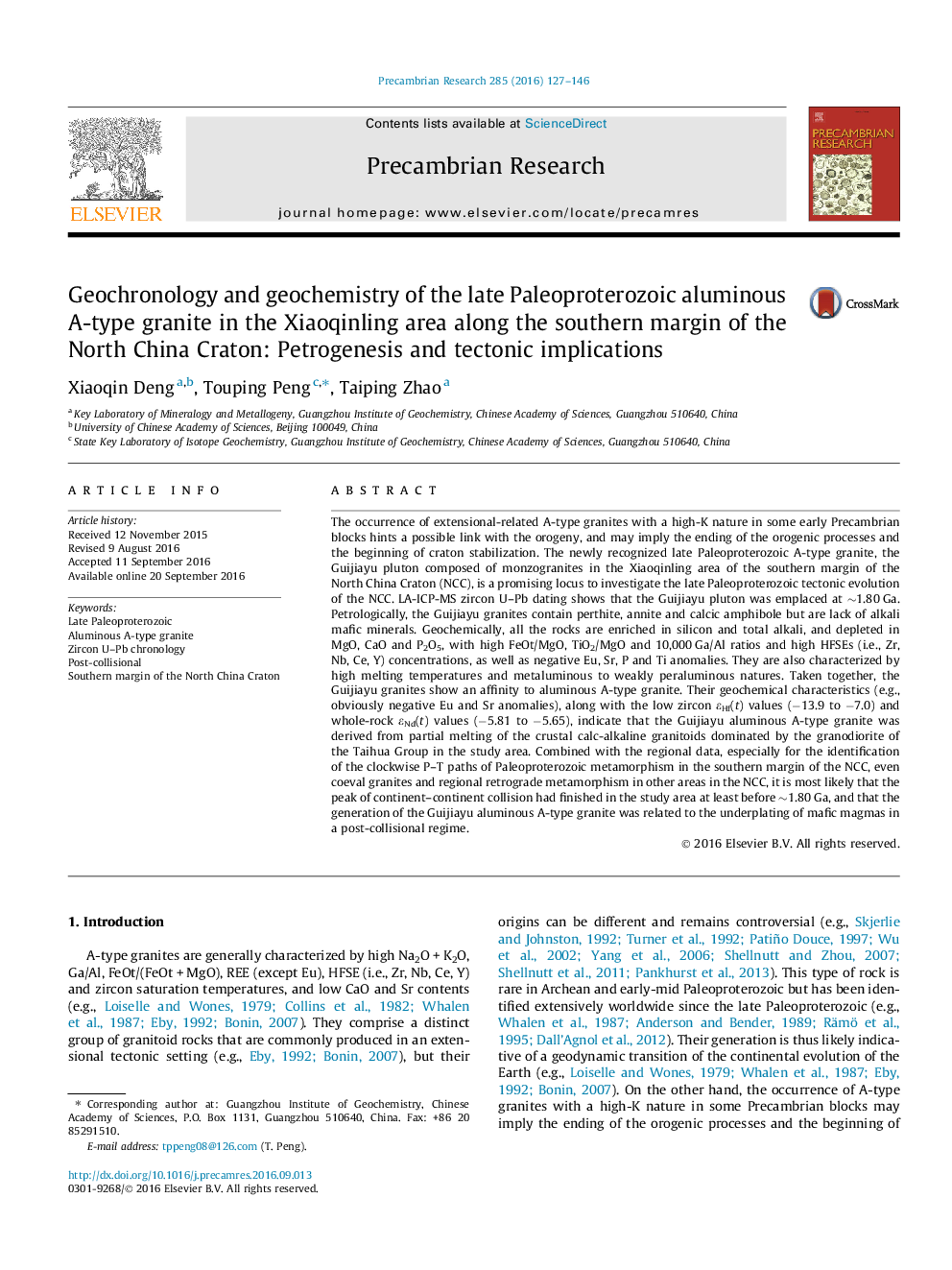| کد مقاله | کد نشریه | سال انتشار | مقاله انگلیسی | نسخه تمام متن |
|---|---|---|---|---|
| 4722345 | 1639590 | 2016 | 20 صفحه PDF | دانلود رایگان |

• The Guijiayu granitic pluton in the southern NCC was emplaced at ca. 1.80 Ga.
• These granites show an affinity to aluminous A-type granites.
• They originated from partial melting of the Neoarchean calc-alkaline granitoids.
• The peak of continental collision had ended in the southern NCC before 1.80 Ga.
• A post-collisional setting is most feasible to account for their generation.
The occurrence of extensional-related A-type granites with a high-K nature in some early Precambrian blocks hints a possible link with the orogeny, and may imply the ending of the orogenic processes and the beginning of craton stabilization. The newly recognized late Paleoproterozoic A-type granite, the Guijiayu pluton composed of monzogranites in the Xiaoqinling area of the southern margin of the North China Craton (NCC), is a promising locus to investigate the late Paleoproterozoic tectonic evolution of the NCC. LA-ICP-MS zircon U–Pb dating shows that the Guijiayu pluton was emplaced at ∼1.80 Ga. Petrologically, the Guijiayu granites contain perthite, annite and calcic amphibole but are lack of alkali mafic minerals. Geochemically, all the rocks are enriched in silicon and total alkali, and depleted in MgO, CaO and P2O5, with high FeOt/MgO, TiO2/MgO and 10,000 Ga/Al ratios and high HFSEs (i.e., Zr, Nb, Ce, Y) concentrations, as well as negative Eu, Sr, P and Ti anomalies. They are also characterized by high melting temperatures and metaluminous to weakly peraluminous natures. Taken together, the Guijiayu granites show an affinity to aluminous A-type granite. Their geochemical characteristics (e.g., obviously negative Eu and Sr anomalies), along with the low zircon εHf(t) values (−13.9 to −7.0) and whole-rock εNd(t) values (−5.81 to −5.65), indicate that the Guijiayu aluminous A-type granite was derived from partial melting of the crustal calc-alkaline granitoids dominated by the granodiorite of the Taihua Group in the study area. Combined with the regional data, especially for the identification of the clockwise P–T paths of Paleoproterozoic metamorphism in the southern margin of the NCC, even coeval granites and regional retrograde metamorphism in other areas in the NCC, it is most likely that the peak of continent–continent collision had finished in the study area at least before ∼1.80 Ga, and that the generation of the Guijiayu aluminous A-type granite was related to the underplating of mafic magmas in a post-collisional regime.
Journal: Precambrian Research - Volume 285, October 2016, Pages 127–146